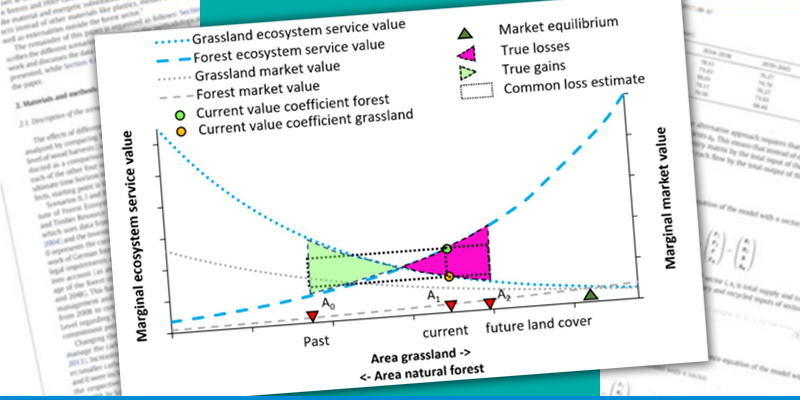Land use changes have an impact on the provision of ecosystem services. Several often-cited economic valuation studies have drawn increasing public and political attention to the costs associated with such changes and the values of ecosystem services at stake. Such valuation studies often use a "benefit transfer" approach, which transfers estimates of economic values of ecosystem services from previously published studies to new valuation objects. The most popular method is the use of constant value coefficients ("unit value transfer") for the valuation of land use changes.
However, if such land use changes are extensive – as in the case of tropical deforestation, for example – constant value coefficients can lead to incorrect assessments. Theoretical considerations suggest that the marginal costs of the loss of ecosystem services increase as the area of a land use type decreases. In contrast, the marginal benefit of gains of the competing land use type decreases. This has an influence on the level of the value coefficients.
In a recently published journal article, scientists from the Technical University of Munich and the Thünen Institute propose the use of endogenous value coefficients whose level depends on the area of the land use type. The article shows how such variable value coefficients can be calculated, what potential errors would arise by using constant coefficients, and how information on land area elasticity can be estimated empirically.
- Knoke T, Elsasser P, Kindu M (2024): Considering the land-cover elasticity of ecosystem service value coefficients improves assessments of large land-use changes. Ecosystem Services 68, 101645. DOI: https://doi.org/10.1016/j.ecoser.2024.101645







